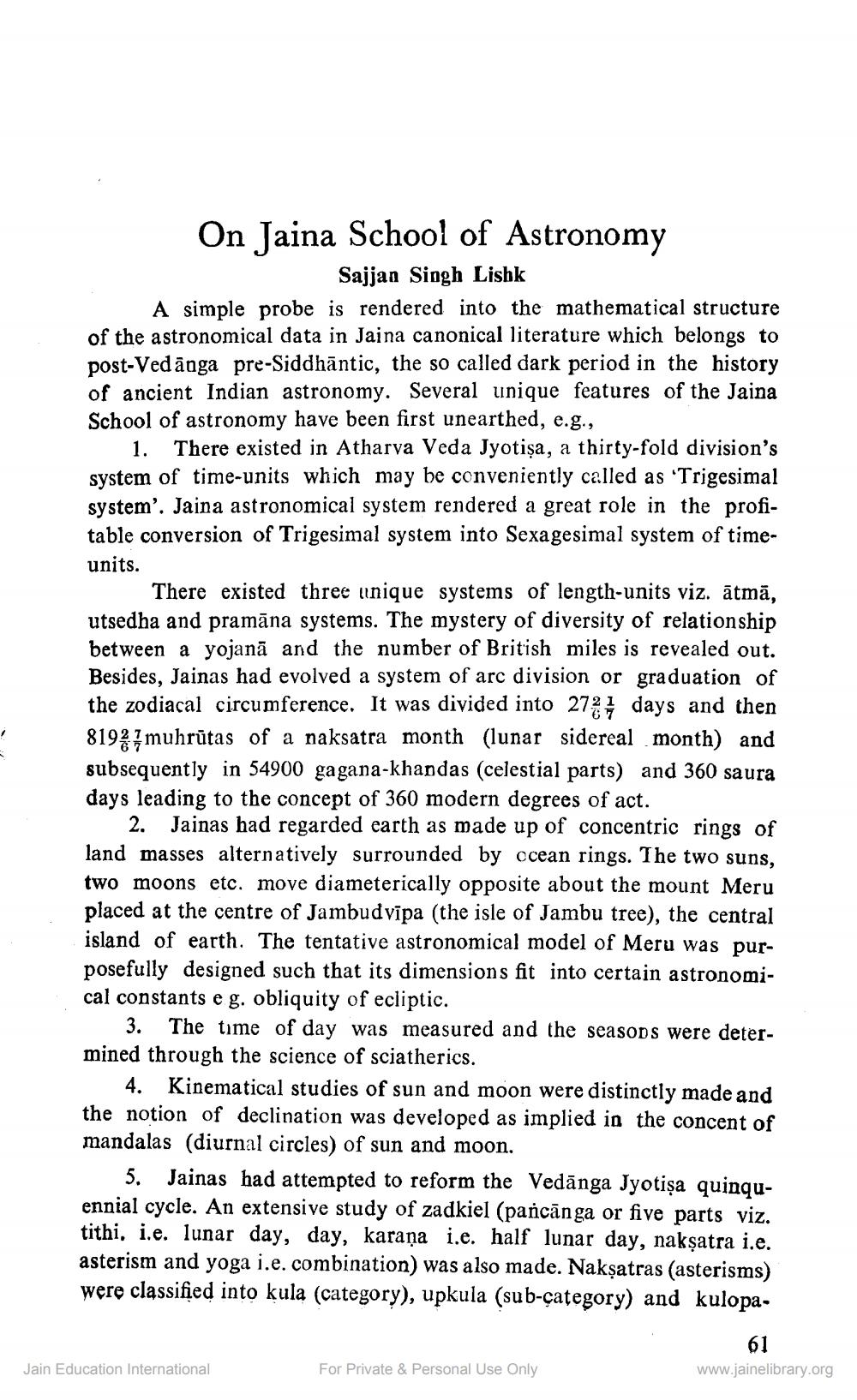________________
!
On Jaina School of Astronomy
Sajjan Singh Lishk
A simple probe is rendered into the mathematical structure of the astronomical data in Jaina canonical literature which belongs to post-Vedānga pre-Siddhantic, the so called dark period in the history of ancient Indian astronomy. Several unique features of the Jaina School of astronomy have been first unearthed, e.g.,
1.
There existed in Atharva Veda Jyotiṣa, a thirty-fold division's system of time-units which may be conveniently called as 'Trigesimal system'. Jaina astronomical system rendered a great role in the profitable conversion of Trigesimal system into Sexagesimal system of timeunits.
There existed three unique systems of length-units viz. ātmā, utsedha and pramāna systems. The mystery of diversity of relationship between a yojana and the number of British miles is revealed out. Besides, Jainas had evolved a system of arc division or graduation of the zodiacal circumference. It was divided into 272 days and then 81927muhrūtas of a naksatra month (lunar sidereal month) and subsequently in 54900 gagana-khandas (celestial parts) and 360 saura days leading to the concept of 360 modern degrees of act.
2. Jainas had regarded earth as made up of concentric rings of land masses alternatively surrounded by ccean rings. The two suns, two moons etc. move diameterically opposite about the mount Meru placed at the centre of Jambudvipa (the isle of Jambu tree), the central island of earth. The tentative astronomical model of Meru was purposefully designed such that its dimensions fit into certain astronomical constants e g. obliquity of ecliptic.
3. The time of day was measured and the seasons were determined through the science of sciatherics.
4. Kinematical studies of sun and moon were distinctly made and the notion of declination was developed as implied in the concent of mandalas (diurnal circles) of sun and moon.
5. Jainas had attempted to reform the Vedānga Jyotiṣa quinquennial cycle. An extensive study of zadkiel (pancanga or five parts viz. tithi, i.e. lunar day, day, karana i.e. half lunar day, nakṣatra i.e. asterism and yoga i.e. combination) was also made. Nakṣatras (asterisms) were classified into kula (category), upkula (sub-category) and kulopa
Jain Education International
For Private & Personal Use Only
61 www.jainelibrary.org




